Once you’ve decided that the Everest of a hiking trip is no longer going to be your Everest, you often feel liberated and even excited. I woke up on my second day in Berlin with a joie de vivre that was somewhat lacking the day before, when I caught the train out to the 66 Lakes Trail. I confidently ordered a coffee from the hotel staff, compensating for my limited German with an enthusiastic, smiling delivery (which, in retrospect, was probably unnerving.) Having sampled enough of the 66 Lakes Trail for my short visit to the city, I was now free to spend the day hiking through some of the most stately parks in Berlin’s center, while saving up enough energy for an even later and saucier night on the city’s club circuit, having already tested the waters at Tresor.
Using the Instant Urban Trail method to create a hiking route through city green spaces—as we covered in Seattle and Philly—I needed to start with a destination. For Berlin, the crown jewel seemed obvious. Tiergarten was the park I wanted to hike to. Not only because it boasts over 500 acres of towering arbors, enchanting waterways, and classical statues, but also because the centrally-located Tiergarten just so happened to be where the loop-shaped Berlin Marathon course would start and finish the next day. The crowds would be so vast that I would be lucky to set foot on an inch of grass if I attempted to go there during the race. And because the park serves as the leafy bridge between several Berlin neighborhoods, there would be plenty of choices for how to get to Tiergarten via the smaller and lesser known city parks and greenways.
With a map cobbled together, I jumped onto the tram by my hotel and headed into the city center again, so that I could connect to the labyrinthine U-Bahn subway system. For those who have never experienced public transportation in Berlin, here’s a pretty common thing that American visitors experience. When I arrived at the U-Bahn, I saw that my train had pulled in and was loading. So I fruitlessly dashed toward it. People whipped their heads around and gawked at me, as if I had just roundhouse-kicked through the glass on one of the vending machines along the train platform. And then I realized, there was no need for a dramatic sprint. The next train would be there in less than 6 minutes. And the one after that would arrive at the same interval. Coming from Massachusetts, where the MBTA is rapidly collapsing because our politicians are allergic to properly funding our public transportation, this was quite the sea change!
Kreuzberg, where I had gone clubbing the night before, was the “trailhead” of my hike. Historically one of Berlin’s international working class neighborhoods, Kreuzberg is particularly emblematic of the gentrification that’s disrupted the city during the last decade. Back in the 1960s, West Berlin recruited Turkish workers to address a labor shortage that lingered far beyond World War II, and of the thousands who stayed on and became full-on Berliners, many lived in Kreuzberg. Artists moved in as well. The punk clubs that opened up here were on the level of New York’s CBGB in the 1970s. (David Bowie and Iggy Pop spent a lot of time here during their Berlin years.) But today, the secret is out and rent prices in Kreuzberg are skyrocketing as people with deeper pockets try to get a foothold in this eclectic and multicultural neighborhood.
We’ll get back to that part later.
From the Hermannplatz U-Bahn station, I crossed the street and entered Volkspark Hasenheide. I had wanted to visit this lush, hilly, and richly forested park ever since reading an article about how Berliners had been holding unsanctioned outdoor raves and parties in the park during the first year of the pandemic. You would have never known this, walking past the rolling lawns, rhododendron groves, and active chicken hutch in Hasenheide, as I did while approaching the “summit” of Rixdorfer Hill (which is actually a big old pile of debris, covered in soil, vegetation, and trees!) People were throwing frisbees, suntanning, and walking dogs. But every person here couldn’t help but seem really small against the impressive green backdrop of the park landscape.
This theme of visible recreation in an expansive setting became more pronounced when I got to the bottom of Rixdorfer Hill and entered Tempelhofer Field. Tempelhof used to be the main airport for Berlin. It was where the west dropped huge supplies of fuel and food, after Soviet forces shut off access to the city amid worsening Cold War tensions. The enormous terminal building and a few ancient planes are still there, but the re-paved runways are now spacious thoroughfares for pedestrians and cyclists, and the grassy lawns are home to athletic courts, flea markets, and a grilling area that I happily strolled past, allowing the meaty smoke from family cookouts to marinade my hiking clothes. Still, Tempelhofer Feld is enormous, and I noticed that the Berlin Marathon expo tents were set up beside the expansive airport terminal. I couldn’t help but feel sorry for the marathoners, being forced to walk so far just to grab their bibs.
From here, I turned north and followed a “bridge” to Tiergarten that included a sublime waterfall in Viktoriapark, skateboarders busting stomach-plunging moves at Park am Gleistdreieck, and a bridge crossing over the Spree that took me past a currywurst stand (mmm) and the Berlin Philharmonic concert hall (which looked more austere in the movie Tár.) Across the street from here, the dense arbors of Tiergarten seemed impossibly tall. And yet, the park was already packed with marathon fans. As it turned out, I had arrived at Tiergarten as the athletes completing the roller-blade version of the race were finishing. After moving along with the herd for a bit, I was able to split off at a circle adorned with statues of bears and stags, finding my way into a quiet, darker grove of trees which seemed ancient but are, in fact, relatively young. Much of Tiergarten was obliterated during World War II. What remained was razed and turned into temporary agricultural fields by the British troops that occupied the area in the wake of the war. It wasn’t until the 1950s when the slow work of re-forestation began.
When you’re visiting Berlin, you constantly have to remind yourself that this seemingly timeless, diverse, and strikingly livable city has been through hell and back. From the decadence and freedoms of the Weimar era, to the atrocities, and self-annihilation of the Third Reich, to the stratification of the Iron Curtain days, to the present. Somehow, Berlin came back from the dead, kinder and more alive. This is evident in its public parks and forests, which are more accessible to the wider public than your average American green spaces. And you can find the same quality amid the city’s nightlife circuit, which I had come to explore and savor as much as Berlin’s urban hiking trails. Covers and drinks are cheap, and personal style is valued over cookie-cutter trends.
I knew that I had to escalate things for my second night in Berlin. As I saw it, I had two options. Berghain, housed in an old power station and arguably the most hardcore, intoxicating techno club in the world, is always a temptation. People here dance for hours as though possessed by a warlock with a drum machine and an arpeggiator. The head bouncer, Sven Marquardt, is a local legend known for his photography, his face tattoos, and his clothing line with Hugo Boss. But there were some problems. Berghain is famously difficult to get into, as Sven and his colleagues size you up and decide whether you fit the vibe of the night. Berghain also opens at midnight, and I had to get up at 8AM the next day to watch my friend run the marathon. (The average party at Berghain, where the windows are blacked out, usually wraps up around 10 or 11 in the morning.) Finally, I got into Berghain on a visit in 2016. Cosmically, I was more likely to get bounced this time. In the same way that you should always leave a casino immediately after winning any game, I knew better than to push my luck again.
The other option—which, to be frank, I had already chosen before arriving in Berlin—was KitKat Club. Founded by Simon Thaur and Kirsten Krüger in the 1990s, KitKat is named after the club in Cabaret where Liza Minnelli performed her sultry routines. It’s basically a 21st Century rekindling of that lost civic hedonism. KitKat is often referred to as a sex club, which is a sort of true but a little misleading, because there are other clubs in Berlin such as Insomnia where most people go to have sex. (How often can you say that in Boston?) KitKat is more of a sex-positive techno club, where people arrive, disrobe, change into kinky outfits, and party within a labyrinth of dance floors, lounges, and even a swimming pool, lit up by wonderfully lurid neon paintings. If you and any fellow clubgoer(s) decide that you want to get to know each other intimately onsite, you are allowed to do so wherever you please. If you’re there just to dance, as most people are, you will encounter folks going beyond well dancing. Whether this is thrilling or mortifying to you is a good barometer for whether you should go to KitKat Club. As the motto at the club goes, “Do what you want, but stay in communication.” (Awareness staff are on hand to remove any jerk-asses who ignore the second part.) The bouncers here can also be challenging to win over, especially on Saturdays. So I practiced my German, put my outfit in a bag, and earnestly showed up just after 10pm.
The above photo from the Instagram page for KitKat’s weekly Symbiotikka party (on Wednesday nights) is a solid representation of the environment. But on most nights, there’s also a culture of discretion at KitKat. You have to turn in your cell phone with your bag of street clothes before entering the neon maze. In the interest of honoring the culture, what happened once the bouncers waved me inside will mostly remain under wraps. But I will offer a couple of club observations that I feel are relevant to this story. After paying the 20 Euro cover, changing into my latex briefs and black fishnet top, and heading in, I was struck by the gregariousness of people I met. I traded outfit compliments with several other clubbers, in a way that actually lead to conversation, against the thumping beats. There was a nice range of races, genders, and sexual orientations—which felt a world apart from the frat house vibe of most clubs in the U.S. There were even a few visitors in wheelchairs on the main dance floor, decked out in their hardcore kink-wear and engaging with fellow club-goers: audibly having a hell of a good time with the other revelers. It was really quite wonderful to behold.
When I left around 2AM, I felt like I had when I climbed Mount Katahdin for the first time. I will savor this wild adventure, I thought, and I will come back for another one.
But there’s a tension in that last bit. The staggering and accessible creativity of Berlin, manifested in its explorable environments—from the trails to the nightclubs—is under attack again: not by fascism, but by capitalism. Berlin is becoming too expensive to retain the creative communities that made the city what it is today. (Even the founder of the 66 Lakes Trail came from the publishing industry, which is not exactly known for its bounteous wages.) To have a city that functions as a playable space—not just a center of commerce—you need residents who are creative and daring enough to re-imagine how urban spaces could be used for recreation…but also class-conscious enough to ensure that this new recreation doesn’t come with a high ticket price. In almost every case, people who can hold both of these thoughts and realize them tend to be short on money themselves but well-endowed with imagination. These are the people who are pushed out of cities when their work puts the city on more radars. It’s a cyclical story that we’ve seen in many cities, but Berlin’s story might be the saddest.
There is some hope. Berlin’s trails are still nurtured and cared for by legions of multi-generational volunteers. And the clubs are lobbying the city for recognition as cultural institutions (and the protections that come with such designation.) For now, knowing that a travel report like this can contribute to the problem of gentrification, I will end my Berlin story on this note. If what you’ve read in my dispatches intrigues you, by all means, go to Berlin! See it while you can. But if you find yourself thrilled, enamored, and wondering, “What if I moved here?”....STOP. Think about a city you know that’s gone through very hard times: a city where most people don’t want to live, but there you could start shit. Or, if you’re stuck in an expensive city where people do want to live, consider all the spaces where you could start shit. Even if it’s a friend’s house.
This, after all, was the “trailhead” for Berlin as we now know it.
CLICK HERE for an AllTrails map of my hike from Kreuzberg to Tiergarten


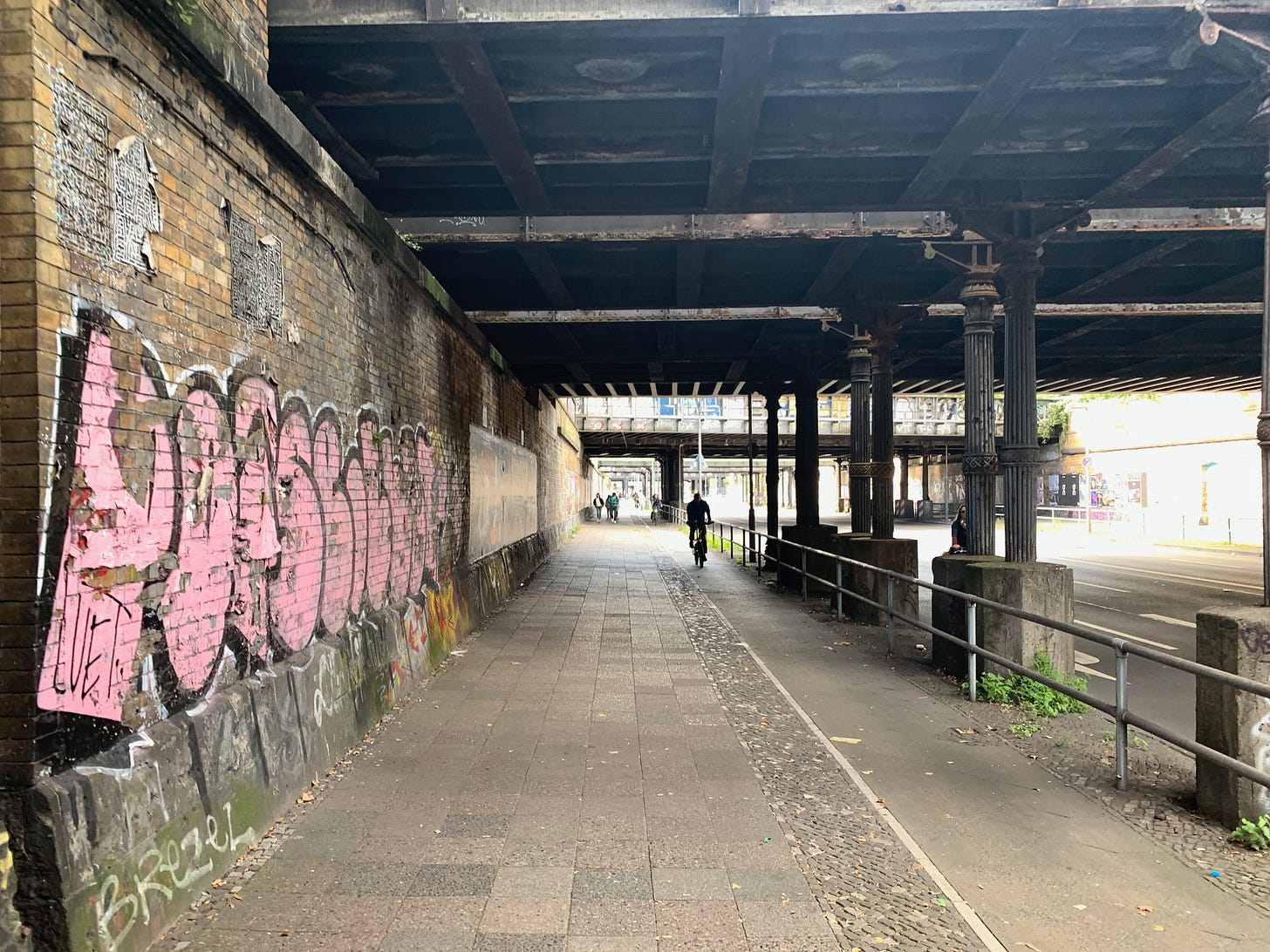
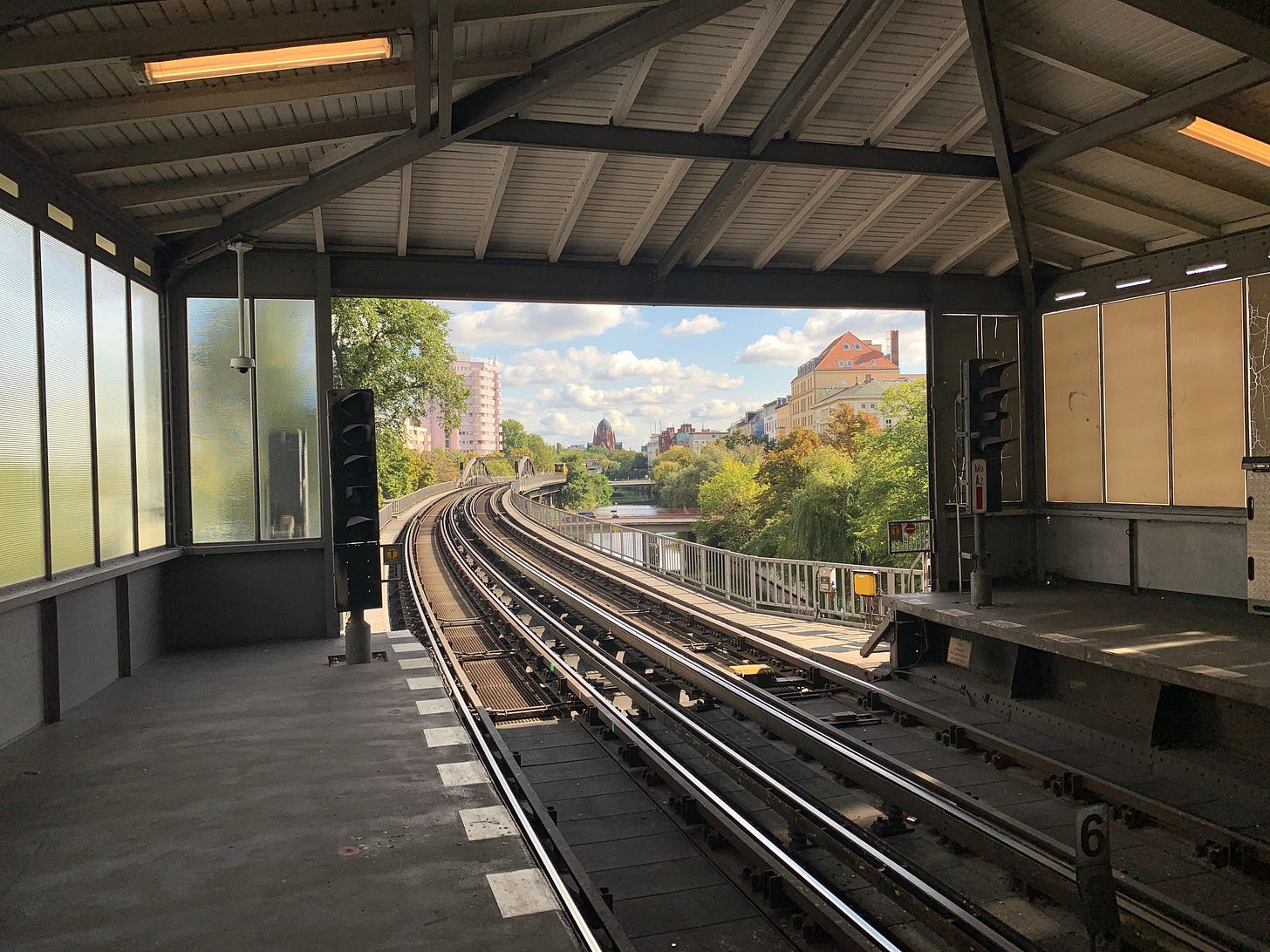
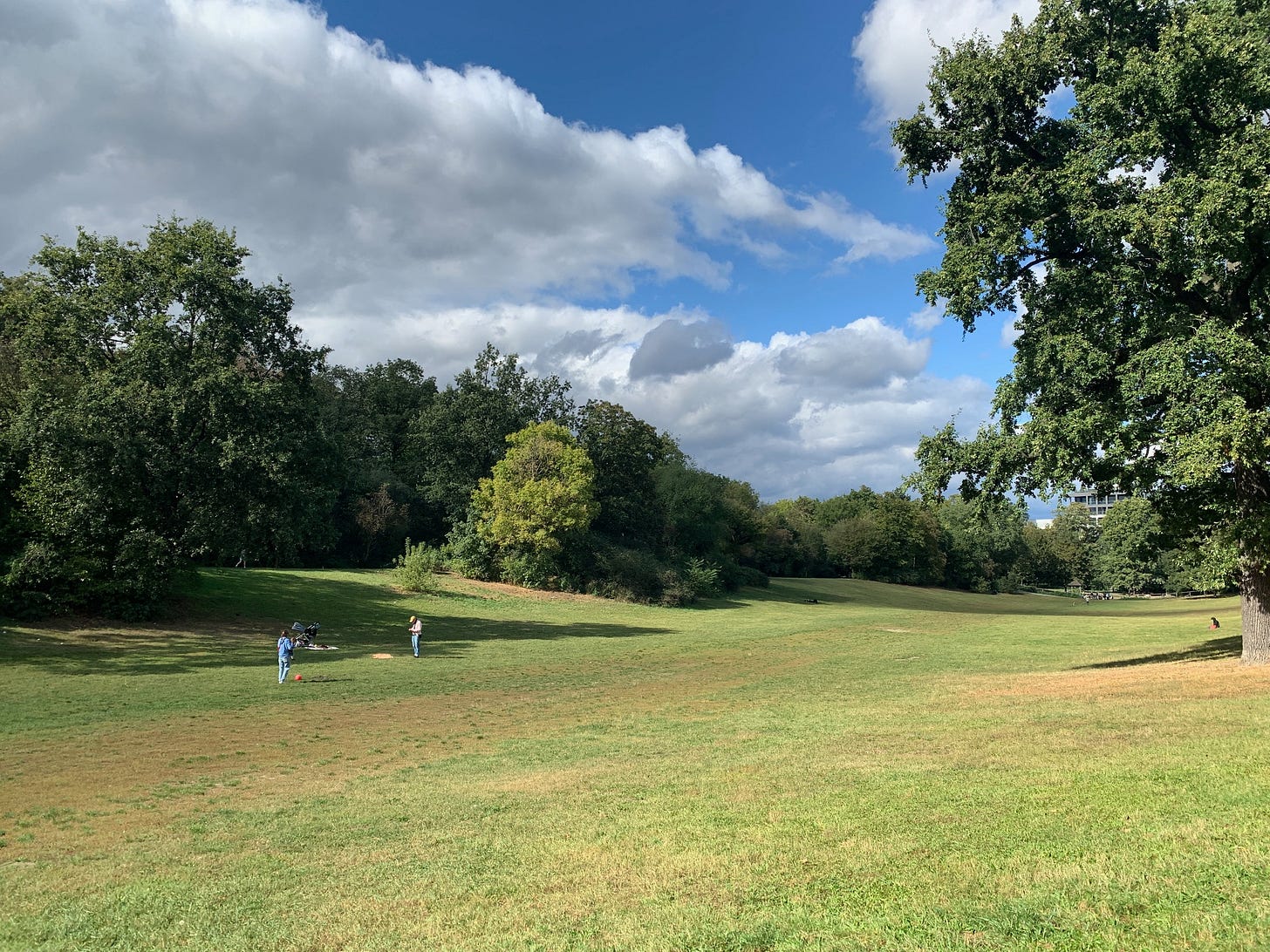
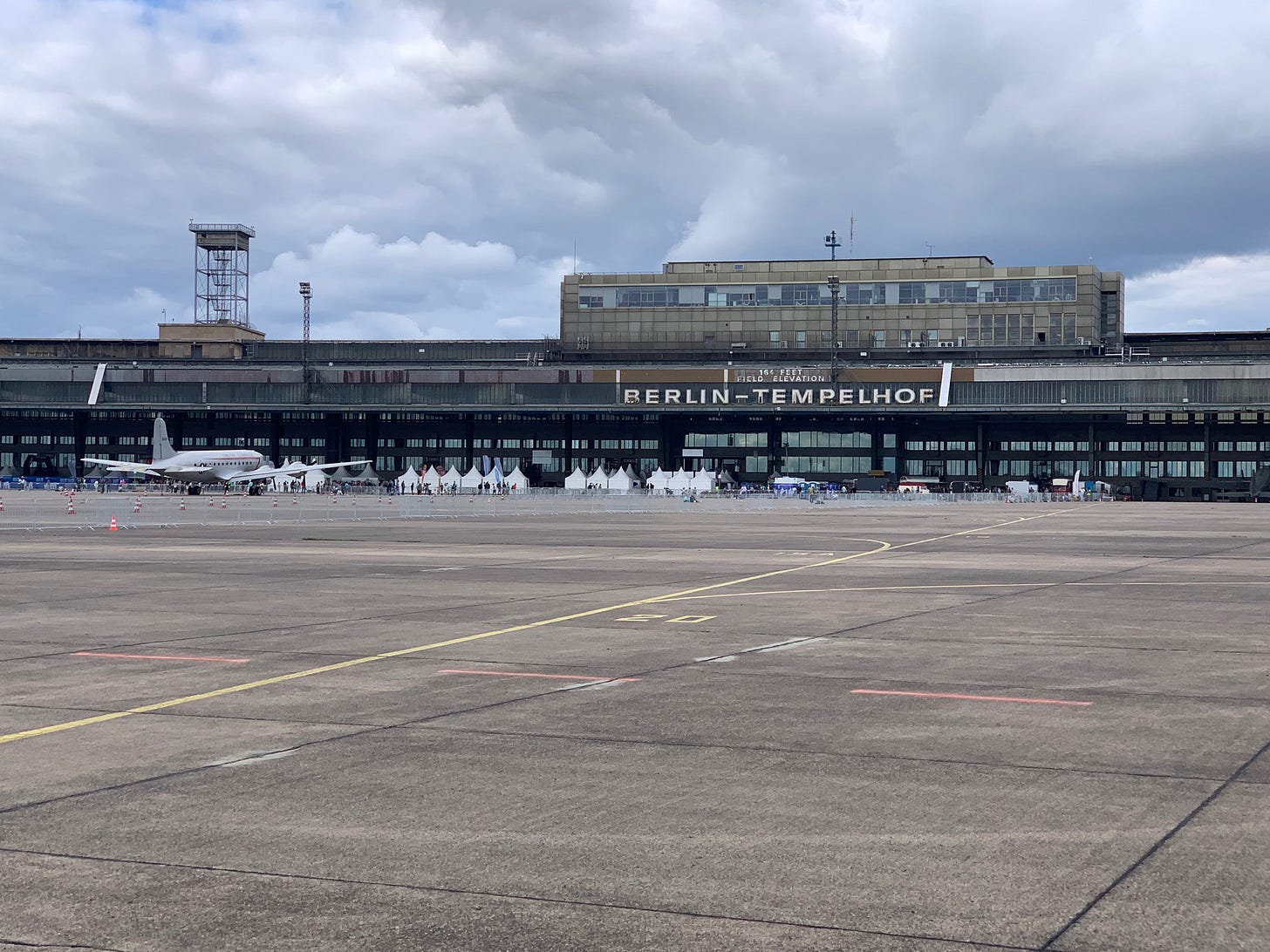
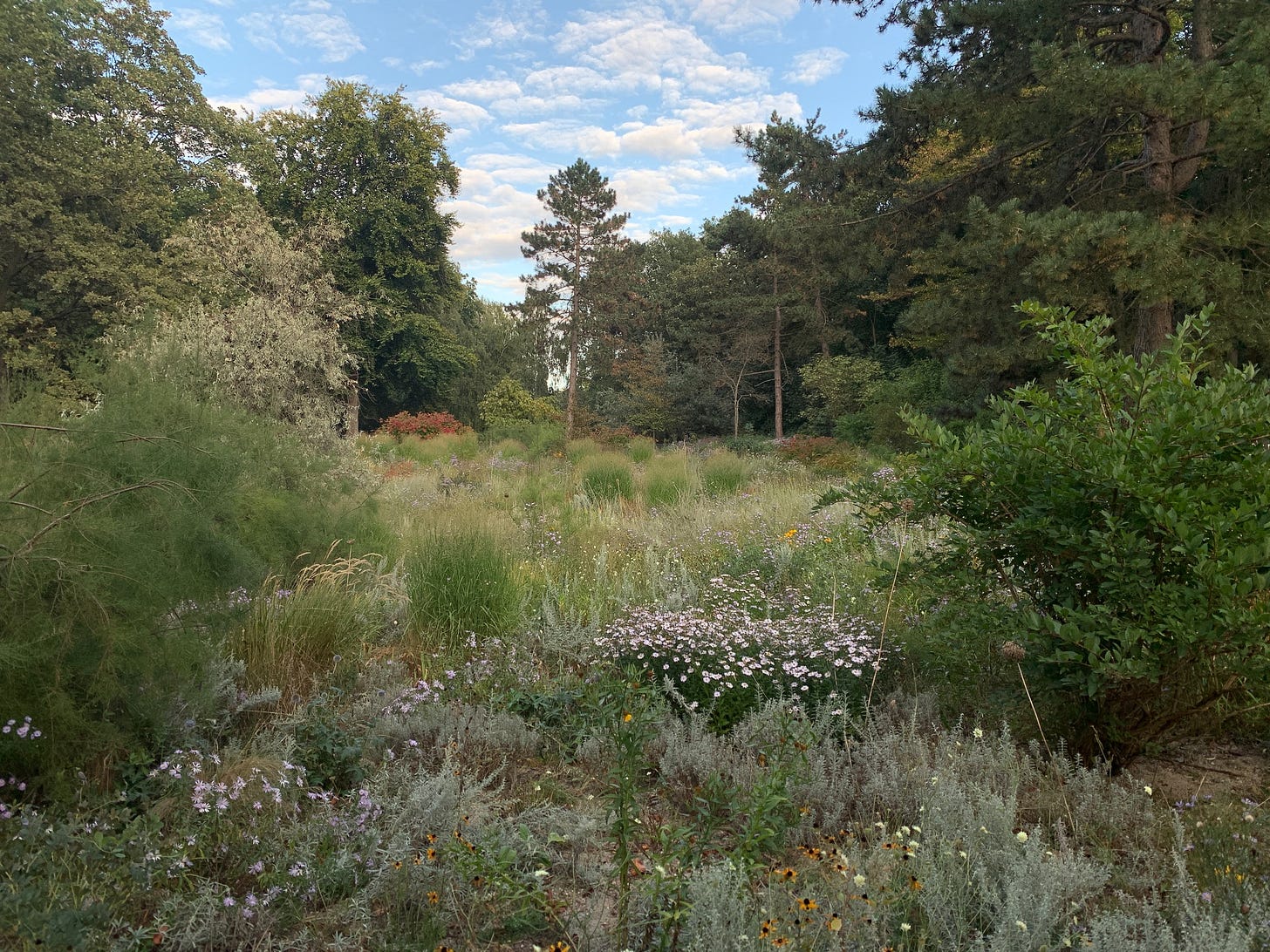
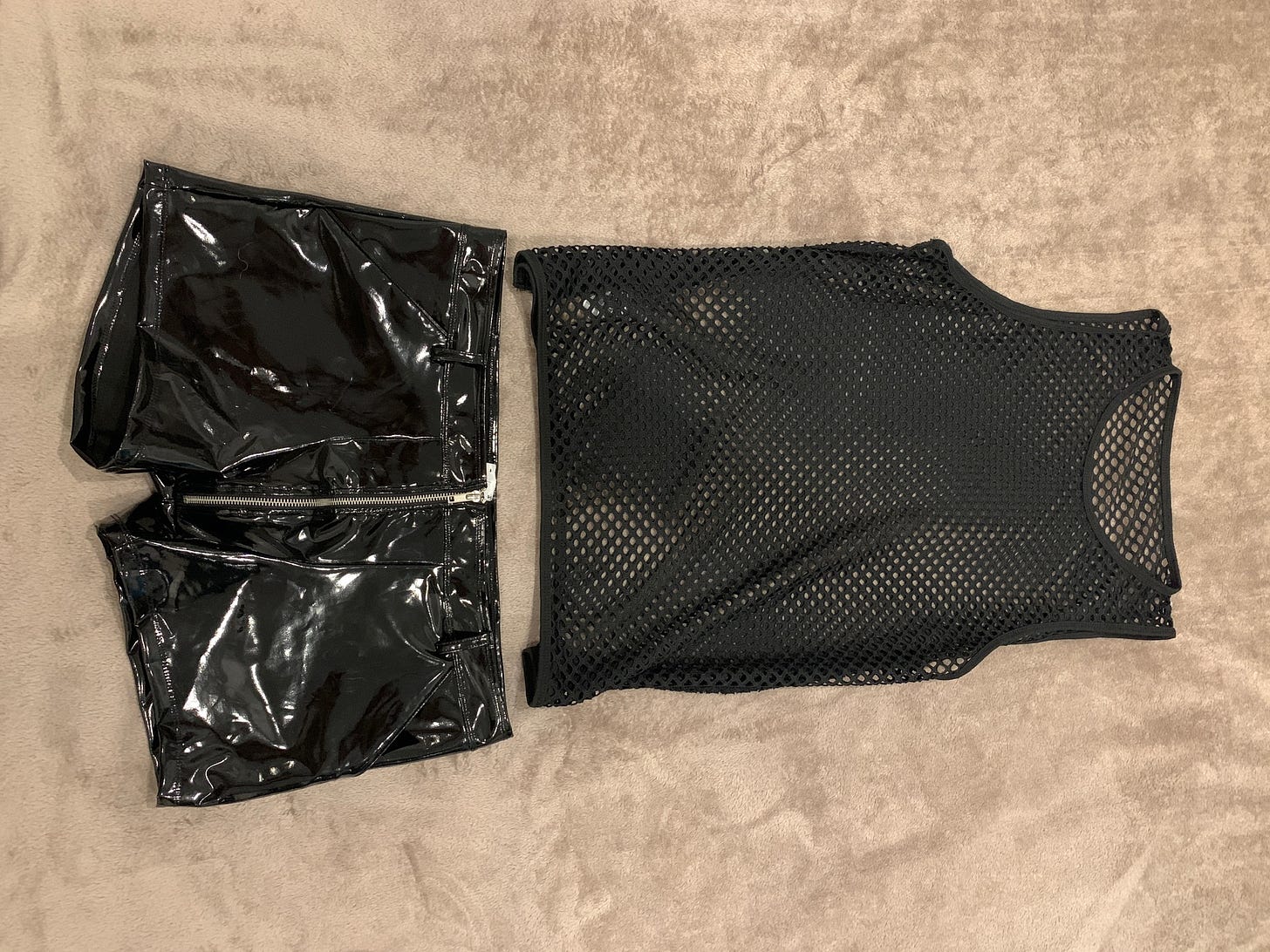
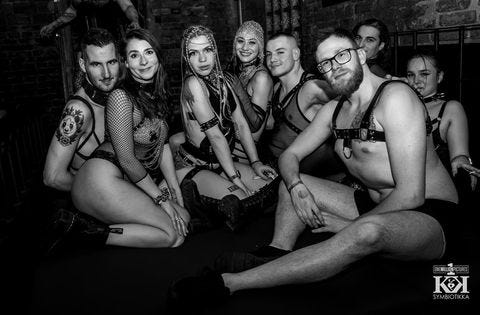
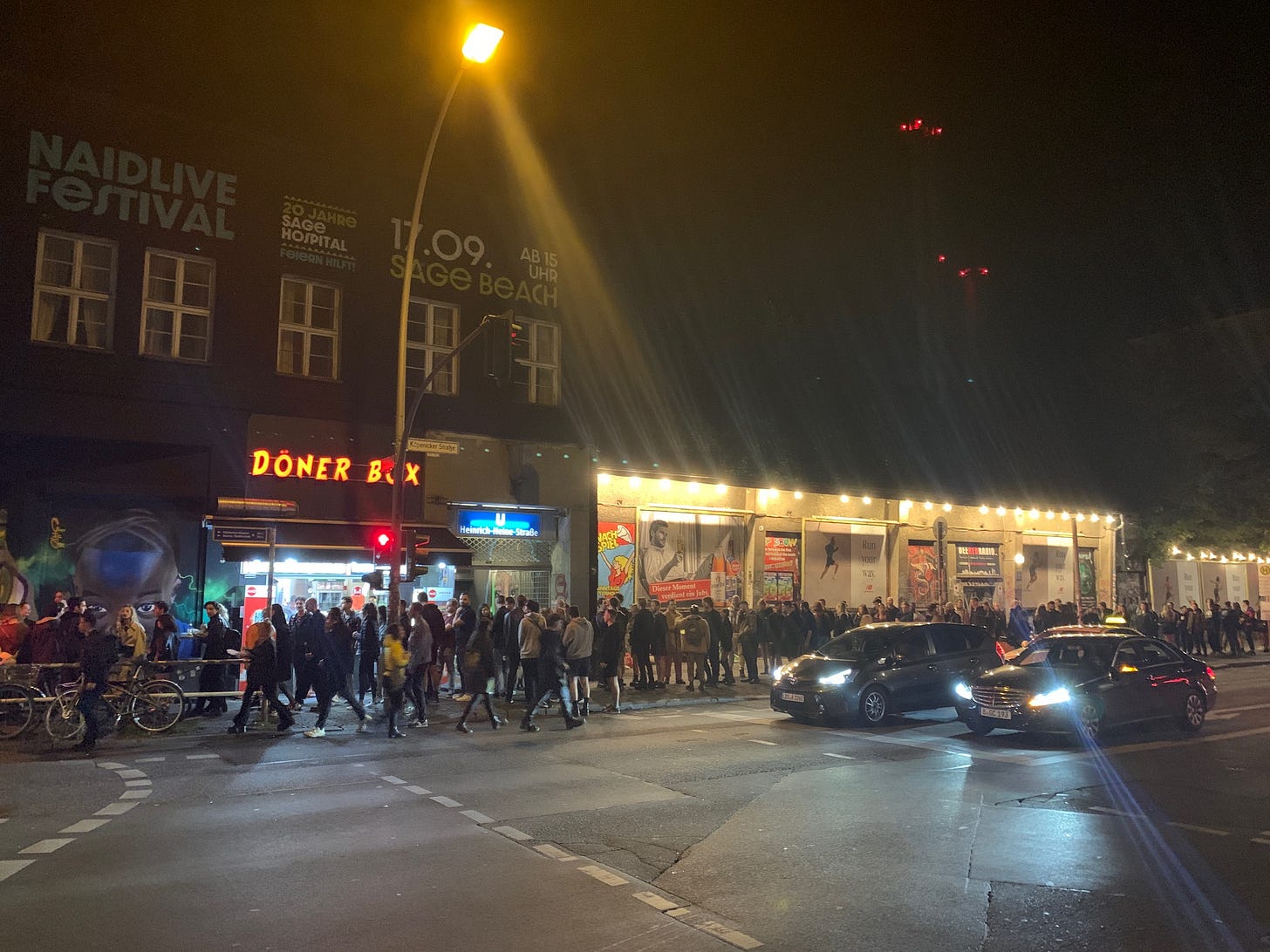
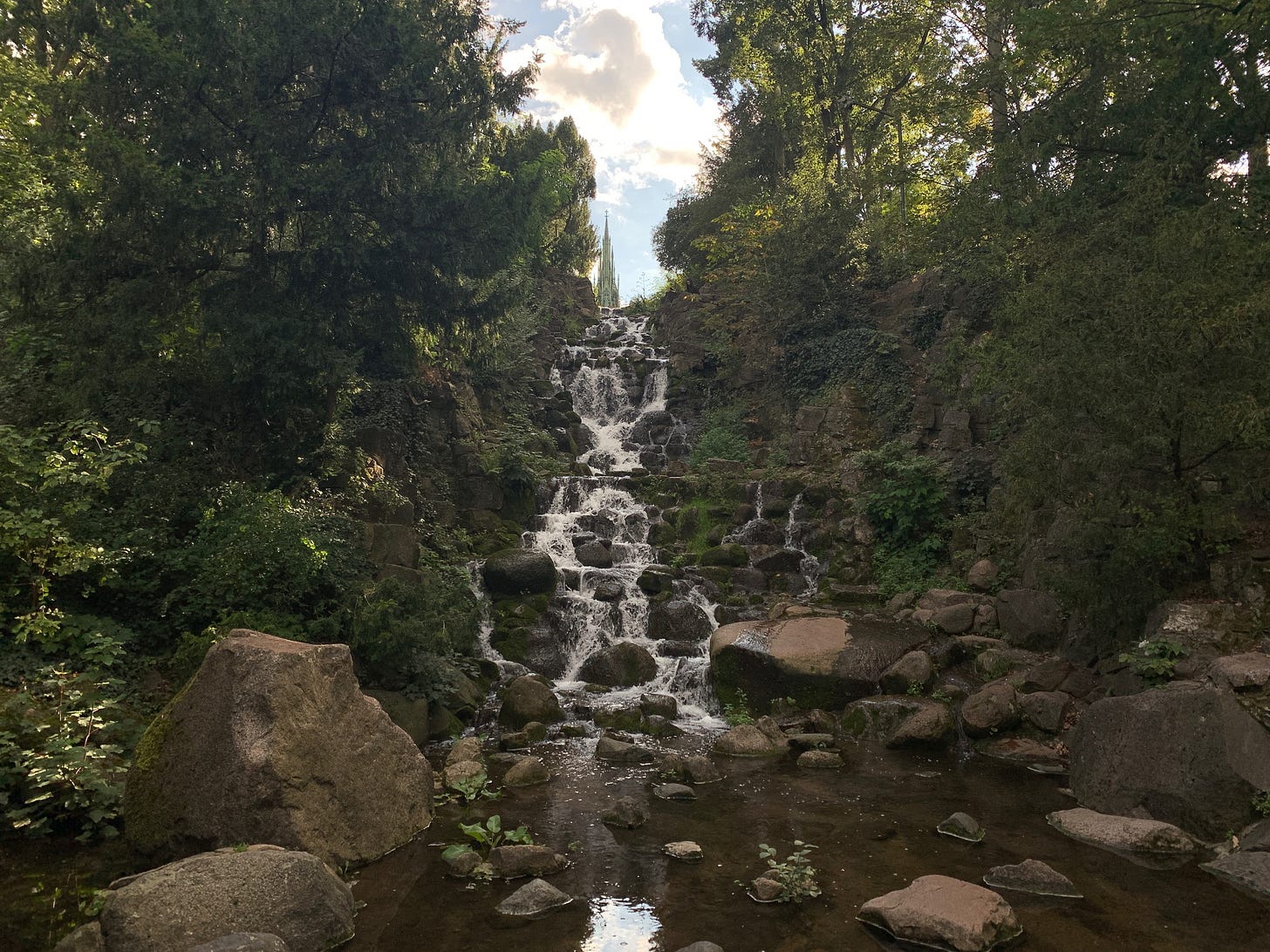
Great dispatch! Your urban hiking writeups are my favorite. I'm intrigued by the nightclubs, but maybe too repressed to truly enjoy them. I think you stayed well on the side of keeping it PG.